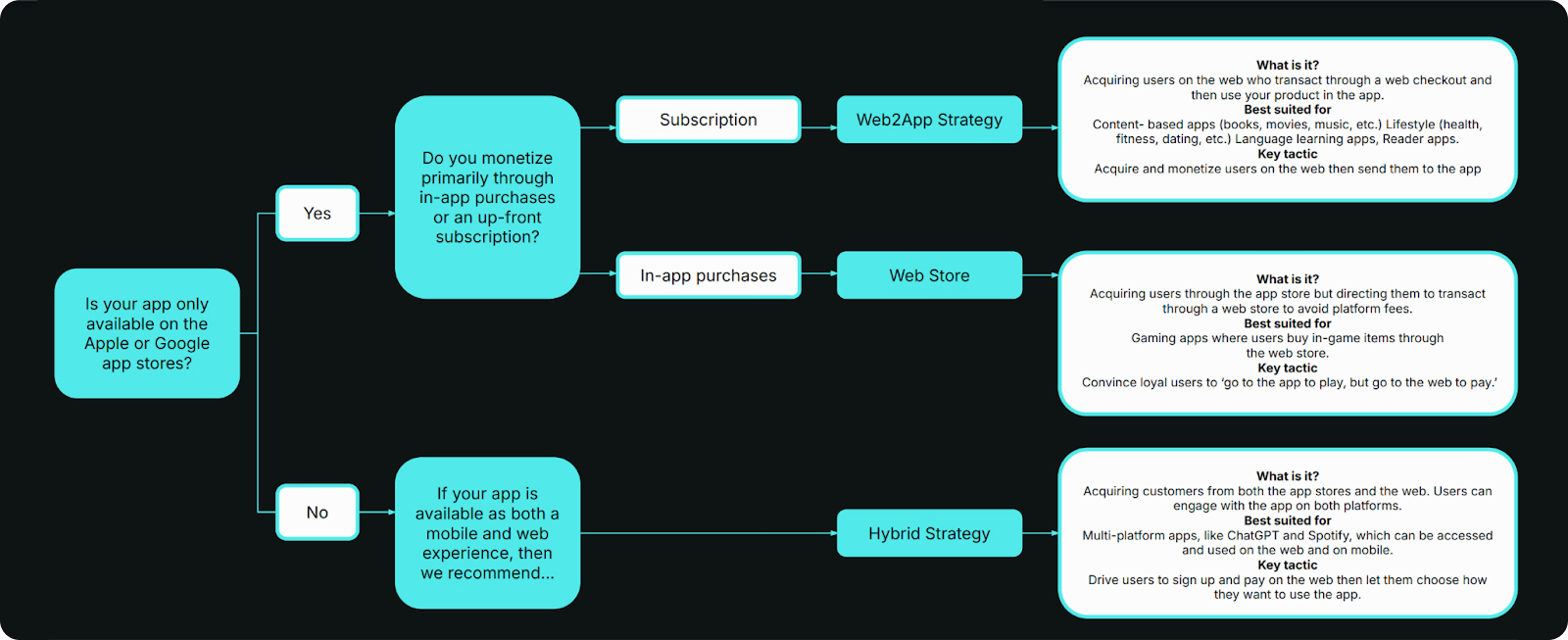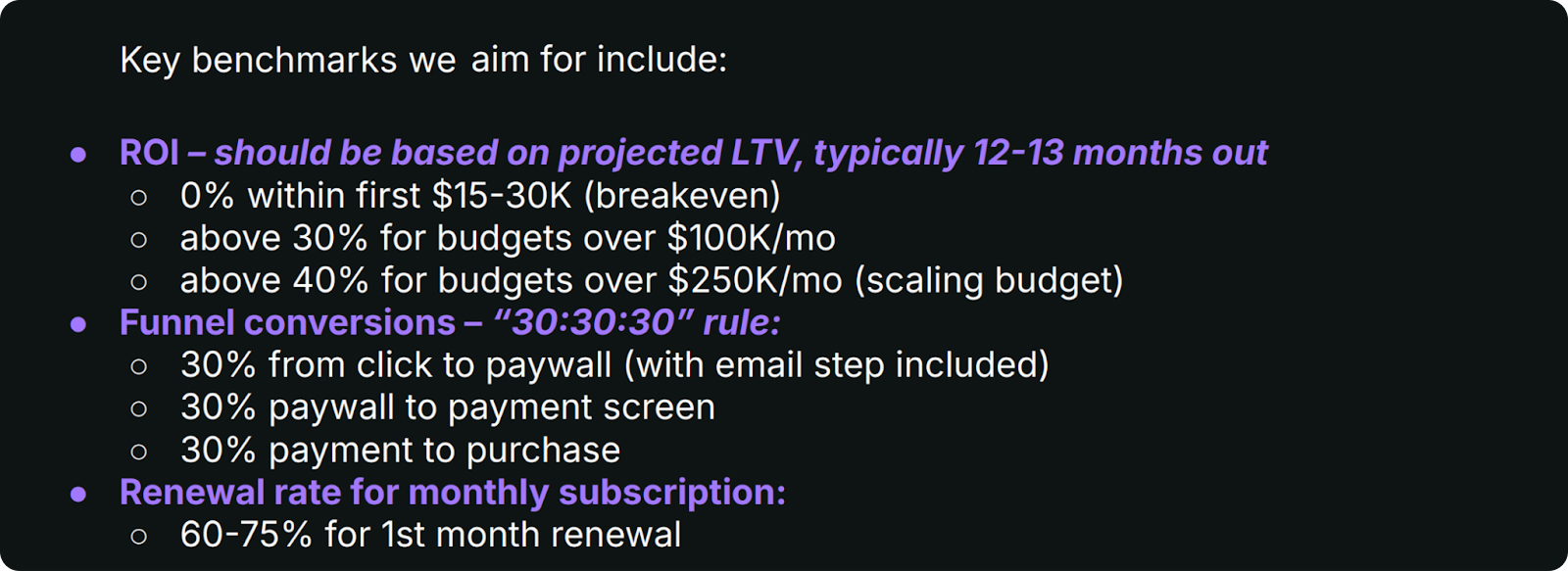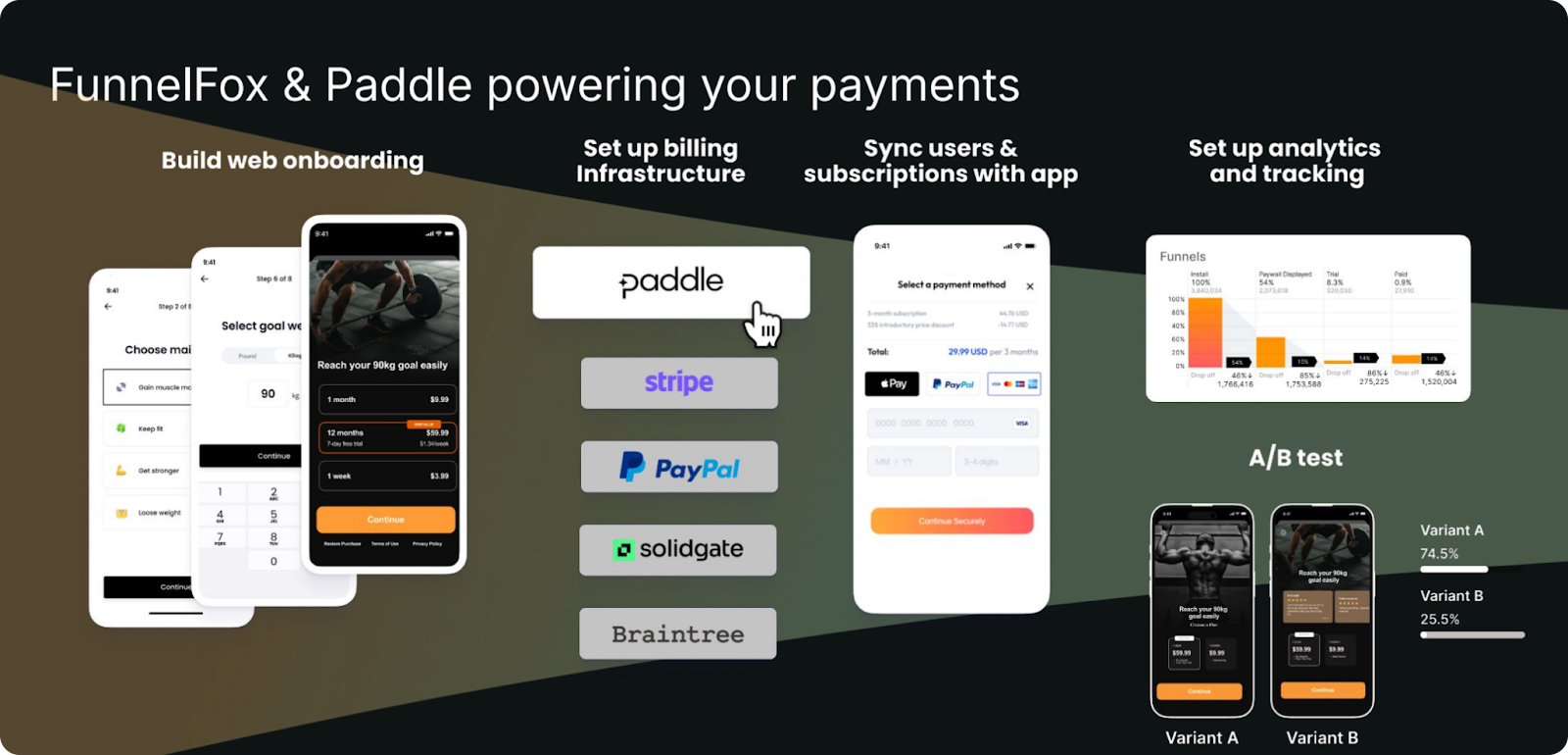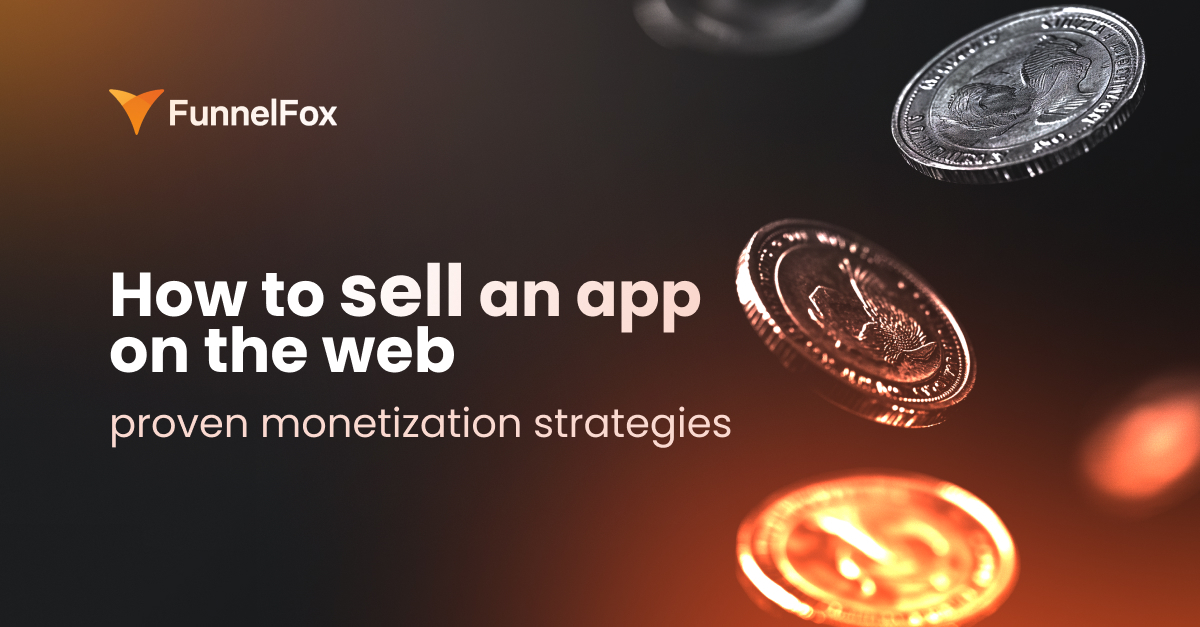What’s all the buzz around app monetization on the web? What are the best ways to monetize an app on the web and how to pick the right monetization strategy? Finally, what does it really take to sell your app outside of app stores?
This post was created in collaboration with Paddle, a payment, tax, and subscription management solution for SaaS. Read on to learn everything you need to know to start selling subscriptions on the web.
What is web monetization and why has it become popular?
Web monetization is the act of generating revenue for your app on the web, outside the app stores.

Until recently, subscription apps generated their revenue primarily through the app stores. While they offer a massive audience, mobile usage has become so widespread that there’s now a much larger pool of potential users beyond marketplaces. Taking user acquisition and sales outside the app stores is becoming the new norm due to:
- rising acquisition costs
- high platform fees
- anti-competitive rules
No wonder more apps—including major players like Flo and BetterMe—are exploring web monetization models as an additional revenue stream.
5 reasons to consider web monetization strategies for your app
- Only 15% of users overlap between the web and app stores. Web-based acquisition gives you access to a much larger potential user base.
- Web monetization can improve your app’s LTV through better billing control, reduced churn, and personalized offers and upsells that app stores often restrict.
- One of the challenges with app stores is the heavy restrictions around data access and performance tracking, such as SKAdNetwork limitations. Web monetization improves your marketing by giving you better control over data.
- Up to 23% of subscription cancellations in the app stores happen due to billing errors—issues largely out of your control. On the web, you can manage the entire payment flow directly and reduce preventable churn.
- The app stores strict policies make it harder to test new offers, run bundled promotions, or experiment with pricing strategies. Web monetization opens up that flexibility and lets you create controlled, targeted campaigns and increase ROAS.
3 Working monetization strategies to sell your app on the web
1. Web-to-app funnels
Web-to-app funnel is a flexible, cost-effective way to generate and grow revenue for your app on the web.

- You launch an ad on a social platform, Google, or other paid channels.
- Users click on the ad and get to a landing page.
- There, users go through an onboarding questionnaire or quiz.
- After onboarding, users get to a paywall page where they see your offers and complete their purchases, still on the web.
- After payment, users are directed to the app to sign in and begin using the app.
In web-to-app funnels, payments are enabled by third-party providers like Paddle, with commissions of around 5%—a major drop from the app stores’ 30%. Besides cost savings, this approach also gives you complete control over the data collected during onboarding.
2. Web stores
Another way to sell an app on the web is web stores. This strategy blends the convenience of in-app use with the flexibility and lower fees of web-based transactions.

- Users download the app from the app store.
- You promote your web store in community channels and encourage users to make purchases directly on the web store.
- After purchase, users get back to the app to access what they’ve purchased on the web store.
Just as in web2app funnels, transactions in web stores are also processed via third-party systems. This monetization strategy works well in environments where users are comfortable with being routed out to a web page for purchases.
3. Hybrid strategy
The hybrid strategy gives you the best of both worlds: app stores reach and web flexibility & data control.

You may want to consider this web monetization model for external purchases that complement your app’s core offering.
For example, an astrology app could sell tarot cards through its web store. Similarly, a health & fitness app could offer physical products like orthotics or downloadable wellness guides. This strategy can also apply in gaming, a developer could sell in-game items via a web store—or even make part of the game playable on the web.
What web monetization strategy is right for you?
This framework will help you decide how to sell an app on the web in your particular case.

Things to consider before you move on to web monetization
The questions below will help you assess whether web monetization is the right way to sell your app right now based on your current capacity, goals, and market positioning.
- Team. Does your team have the resources & expertise needed to succeed with web monetization—UA managers, creative designers, web developers, payments infrastructure, and data analytics? If not, are you prepared to hire the people you need?
- Budget & time. Are your resources aligned with the scale of your plans? Can you afford to spend a minimum $15K-$30K budget to experiment with the web (ie. money to possibly lose)?
- Strategy. What’s your core approach to web monetization? Is it aligned with your growth goals? What decisions need to be made about pricing, subscription durations, target audiences, and geographies?
- Benchmarks. Do you have clear performance and web monetization metrics or can research the market to establish them? How do you define success and how will you measure it? What level of profitability can you afford?

So, you’re in? Here’s what it’ll take you to start selling your app on the web
Let’s say, you’ve picked the web-to-app strategy. Here’s your roadmap:
Step 1. Set up user acquisition. You’ve got plenty of channels to choose from, but Meta is the easiest to start with, and ad creatives don’t burn out so quickly there. Pay proper attention to creatives as they’re really important to get your funnel working and performing.
Step 2. Design the onboarding flow. Web onboarding should logically pick up where your ad creatives left off to keep the consistent storytelling.
Step 3. Set up payment infrastructure. Integrate a payment provider. We recommend Paddle—it’s the best solution for companies that want to outsource risks and tax management.
Step 4. Sync users and subscriptions data with your app. This ensures that users who paid for subscriptions on the web can access them in the app.
Step 5. Set up marketing tracking and analytics. Analyze user behavior and run A/B tests to measure and optimize each step of the funnel as well as its overall performance. Iterate fast to see results quicker.
You can take all these steps on your own and spend months and tens of thousands of dollars. Or, you can…
Launch quickly & earn more with FunnelFox & Paddle
Stop leaving money on the table—supercharge your web-to-app strategy with FunnelFox and Paddle working in perfect sync. Build and launch sophisticated web funnels in hours, track every click, see exactly where users convert, and optimize every step for maximum revenue. This powerful duo cuts your costs by 3x compared to in-house development while giving you enterprise-grade tools at your fingertips.
FunnelFox lets you build, test, and optimize your funnels without writing a single line of code. Meanwhile, Paddle manages all the payment risks—from tax calculations and compliance to fraud prevention across 200+ countries. Together, they’re your complete toolkit for faster growth and higher profits, starting from day one.
Want to earn more by selling your app on the web? Schedule a demo today and see how FunnelFox and Paddle can help you start quickly and hassle-free.










